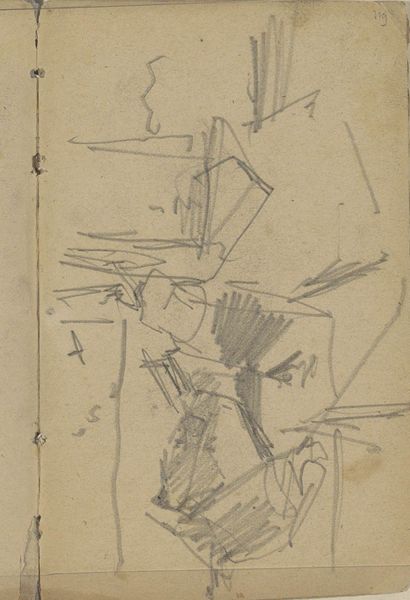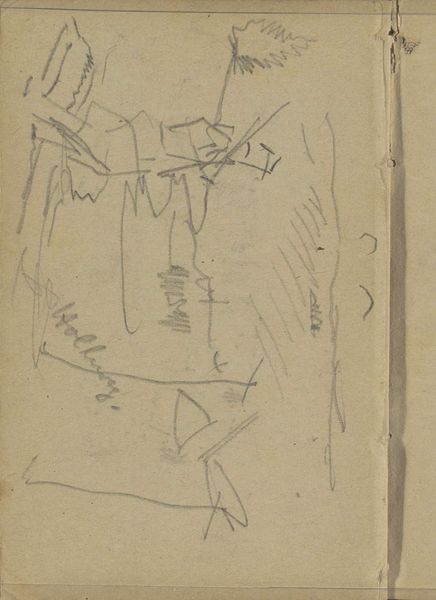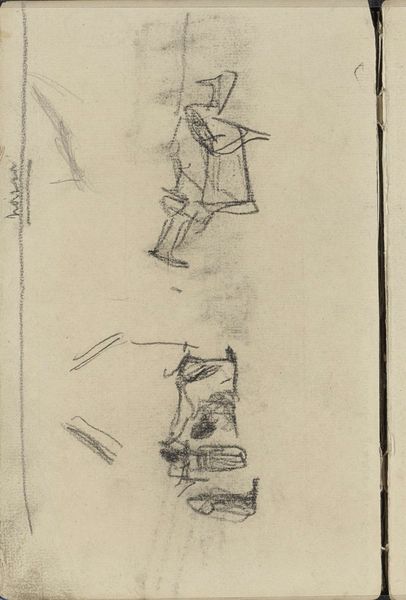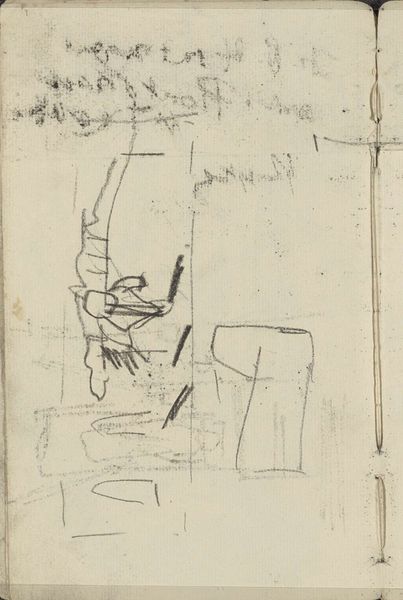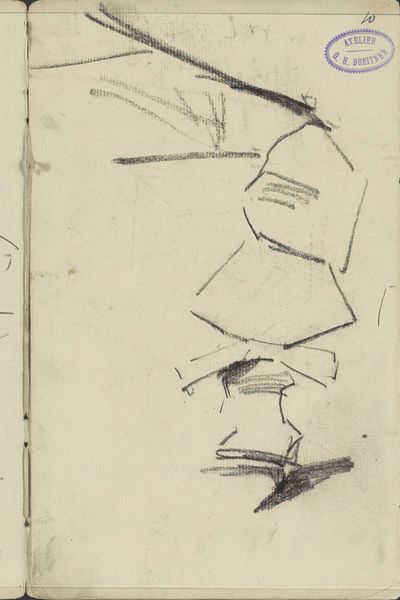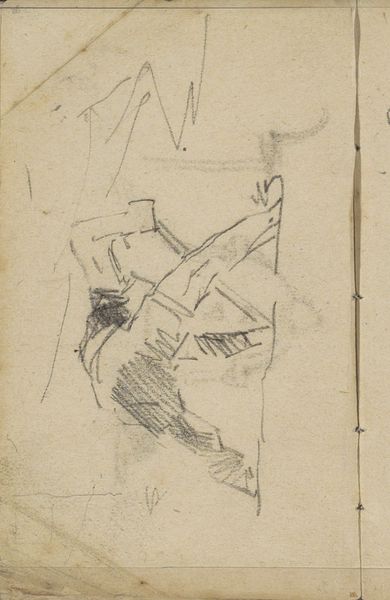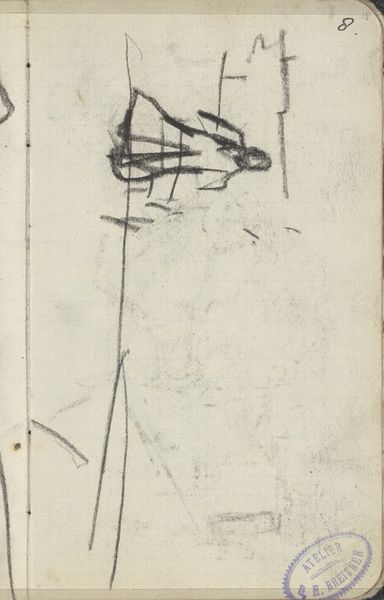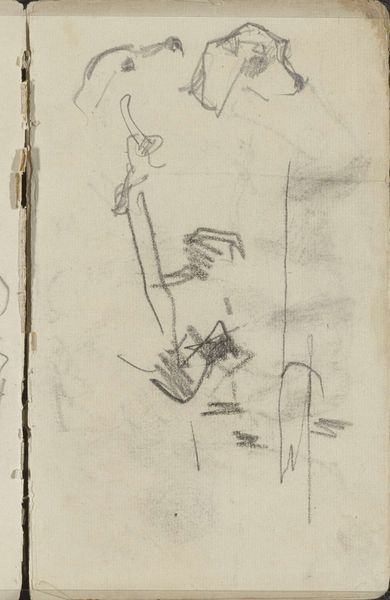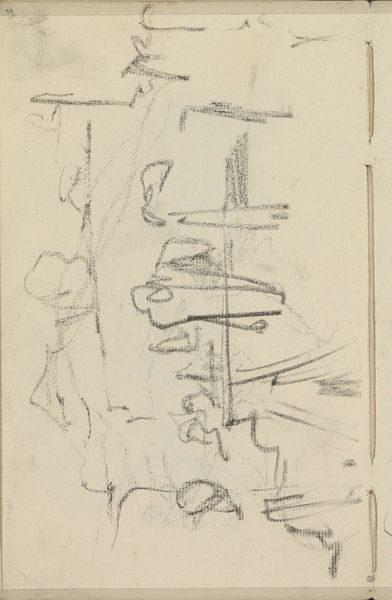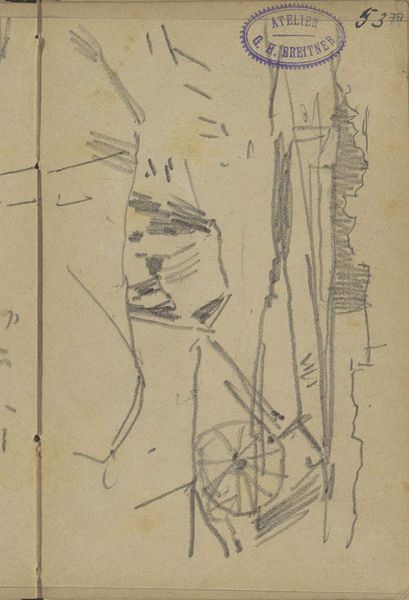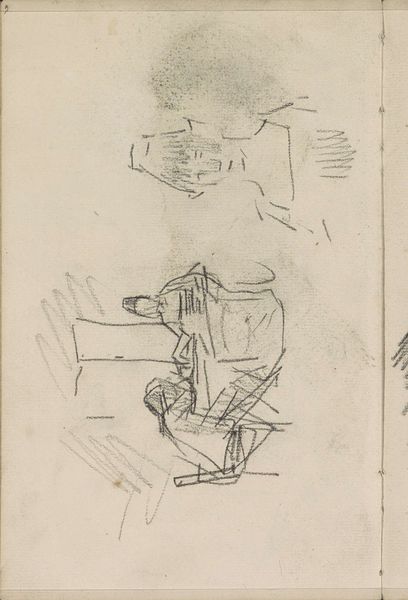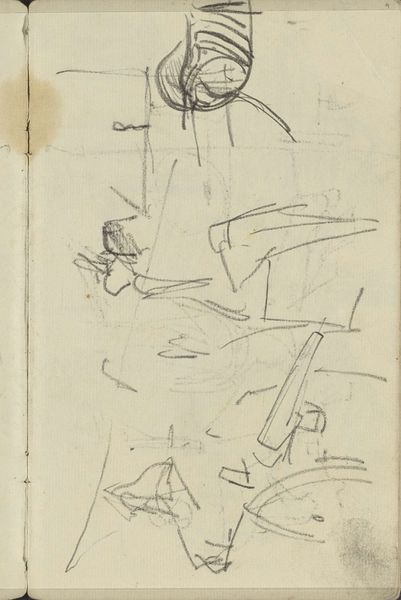
drawing, pencil
drawing
sketch
pencil
Copyright: Rijks Museum: Open Domain
Editor: This is "Stadsgezicht met drie figuren" by George Hendrik Breitner, dating from around 1887 to 1891. It's a pencil drawing, and it feels very raw, like a quick impression of a scene. The figures are barely there, just these suggestive shapes. What strikes you most about this piece? Curator: What I see is the labor, quite literally. The immediate nature of the pencil sketch displays the raw, unmediated physical act of Breitner engaging with his urban surroundings. He's consuming the city, processing it, and outputting it in this material form. Editor: So you're focusing on the process rather than the subject? Curator: Absolutely. Consider the economic context. Breitner was part of a generation grappling with industrialization. This sketch isn't some idealized landscape; it’s a record of the city's effect on the artist and the immediate resources deployed. The choice of pencil itself is significant, an accessible, readily available tool for documenting everyday life. Editor: That's an interesting point. It feels less like 'art' and more like… urban documentation. Curator: Precisely! And what about the "three figures" indicated in the title? How are those workers located socioeconomically within the art historical framework? What types of labour and actions can be seen or implied? Where are these subjects located in society and within the artistic representations of that era? The quick, unrefined lines suggest not only speed but also the urgency of capturing a fleeting moment of labor. The city is in motion, people are in motion, and Breitner, too, is caught up in that rhythm of production and consumption. Editor: I never thought about it that way, about the materiality and labor being so central. I was just seeing it as an incomplete picture. Curator: And that's the power of considering the material conditions of art! It shifts our focus from the purely aesthetic to the social and economic realities that shape artistic creation. Editor: Thanks. I am looking at this work in an entirely different way.
Comments
No comments
Be the first to comment and join the conversation on the ultimate creative platform.
